If you have not listened to The Climax Blues Band before, then you are in for a treat. Whilst they had just one song that would classify as a 'hit', "Couldn't Get It Right", they crafted a string of excellent albums, and, in the late '70s and early '80s, seemed on the verge of breaking into the big time.
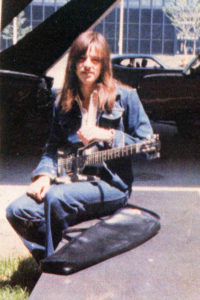 Peter Haycock, who very sadly died at a young age just a few years ago, was a gifted guitarist. Apart from his brilliant playing, he will probably also be remembered for his Veleno guitars, those all-aluminium creations of John Veleno. Several of Pete's were gold-plated, which presumably is what inspired the title of their excellent 1976 album...'Gold Plated'.
Peter Haycock, who very sadly died at a young age just a few years ago, was a gifted guitarist. Apart from his brilliant playing, he will probably also be remembered for his Veleno guitars, those all-aluminium creations of John Veleno. Several of Pete's were gold-plated, which presumably is what inspired the title of their excellent 1976 album...'Gold Plated'.
Apart from "Couldn't Get It Right", the album features some excellent tunes with terrific blues guitar work, such as "Mighty Fire" and "Rollin' Home", from which I chose my 'Tasty Blues Lick' No.1. The lick comes just into the second verse, straight after Pete sings that memorable line, "...sometimes I feel like a monkey". We could call it the 'monkey lick', I suppose, but whether we do or not, it's a beauty.
Check out the instructional video I've posted on YouTube HERE or by clicking the "Tasty Blues Lick" image below, where I break it down. And if you haven't already got 'Gold Plated', treat yourself to a copy on CD or vinyl. You'll be doing yourself a big favour, and, if you buy it via one of my links, you'll be helping to support the site and the free guitar lessons 🙂 because for each sale from a link, a small commission will be generated - at no extra cost to you. You'll find both UK and USA links to buy the album, HERE.
Enjoy the Monkey Lick and the rest of Pete Haycock's wonderful guitar playing.
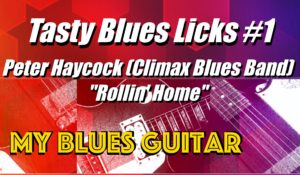
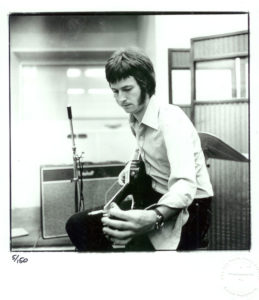 These days, I try to be more disciplined. After doing five or ten minutes of hand and finger stretches (more on that later) the first thing I do when I take my guitar from its stand is grab my little clip-on tuner, attach it to the headstock and start tuning. It's a good habit to develop on a number of levels, not least of which is that it trains your ear to appreciate what your guitar should sound like when it is in tune. And the more you do it, the more attuned you'll become to a well-tuned instrument, and the more you'll recoil in horror when you hear one that isn't. With so many tuners available for all tastes and budgets, it's an essential piece of equipment that you can't afford to be without.
These days, I try to be more disciplined. After doing five or ten minutes of hand and finger stretches (more on that later) the first thing I do when I take my guitar from its stand is grab my little clip-on tuner, attach it to the headstock and start tuning. It's a good habit to develop on a number of levels, not least of which is that it trains your ear to appreciate what your guitar should sound like when it is in tune. And the more you do it, the more attuned you'll become to a well-tuned instrument, and the more you'll recoil in horror when you hear one that isn't. With so many tuners available for all tastes and budgets, it's an essential piece of equipment that you can't afford to be without.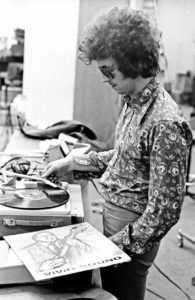
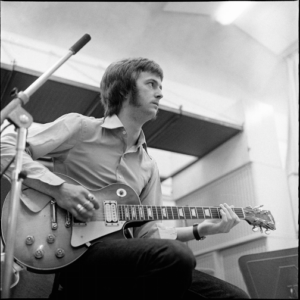 Arguably the most difficult track to master from the Beano album, 'Hideaway' presents the player with some tricky techniques and timing challenges. The first one to be aware of is right at the start, the second time we play the main riff. If we listen very closely to the record, we can hear that Eric does not play the second note. Instead, it is 'implied', and our brain fills in the gap. This subtle point goes a long way to capturing the feel of the track as it was recorded.
Arguably the most difficult track to master from the Beano album, 'Hideaway' presents the player with some tricky techniques and timing challenges. The first one to be aware of is right at the start, the second time we play the main riff. If we listen very closely to the record, we can hear that Eric does not play the second note. Instead, it is 'implied', and our brain fills in the gap. This subtle point goes a long way to capturing the feel of the track as it was recorded.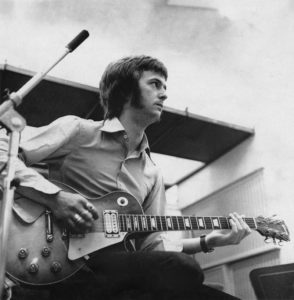 I've just uploaded the first cover video (scroll down) to my new YouTube channel. That old favourite, 'Hideaway'. I've also listed five of nine video lessons that break the tune down. I'll get the remaining four done and up as soon as I can.
I've just uploaded the first cover video (scroll down) to my new YouTube channel. That old favourite, 'Hideaway'. I've also listed five of nine video lessons that break the tune down. I'll get the remaining four done and up as soon as I can.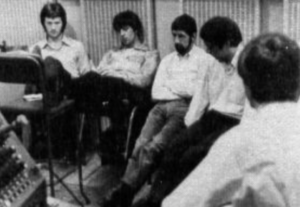 Once the album was released, the die was set and the electric guitar would never be the same again. Countless players from Eddie Van Halen and Bernie Marsden to Gary Moore and Billy Gibbons, have all been quoted as saying how great an influence this album had on them. I can well remember hearing it for the first time myself, many decades ago.
Once the album was released, the die was set and the electric guitar would never be the same again. Countless players from Eddie Van Halen and Bernie Marsden to Gary Moore and Billy Gibbons, have all been quoted as saying how great an influence this album had on them. I can well remember hearing it for the first time myself, many decades ago.